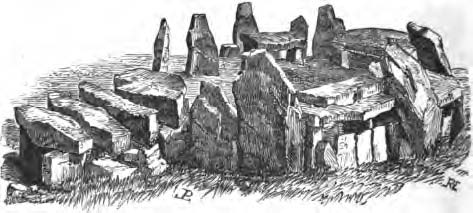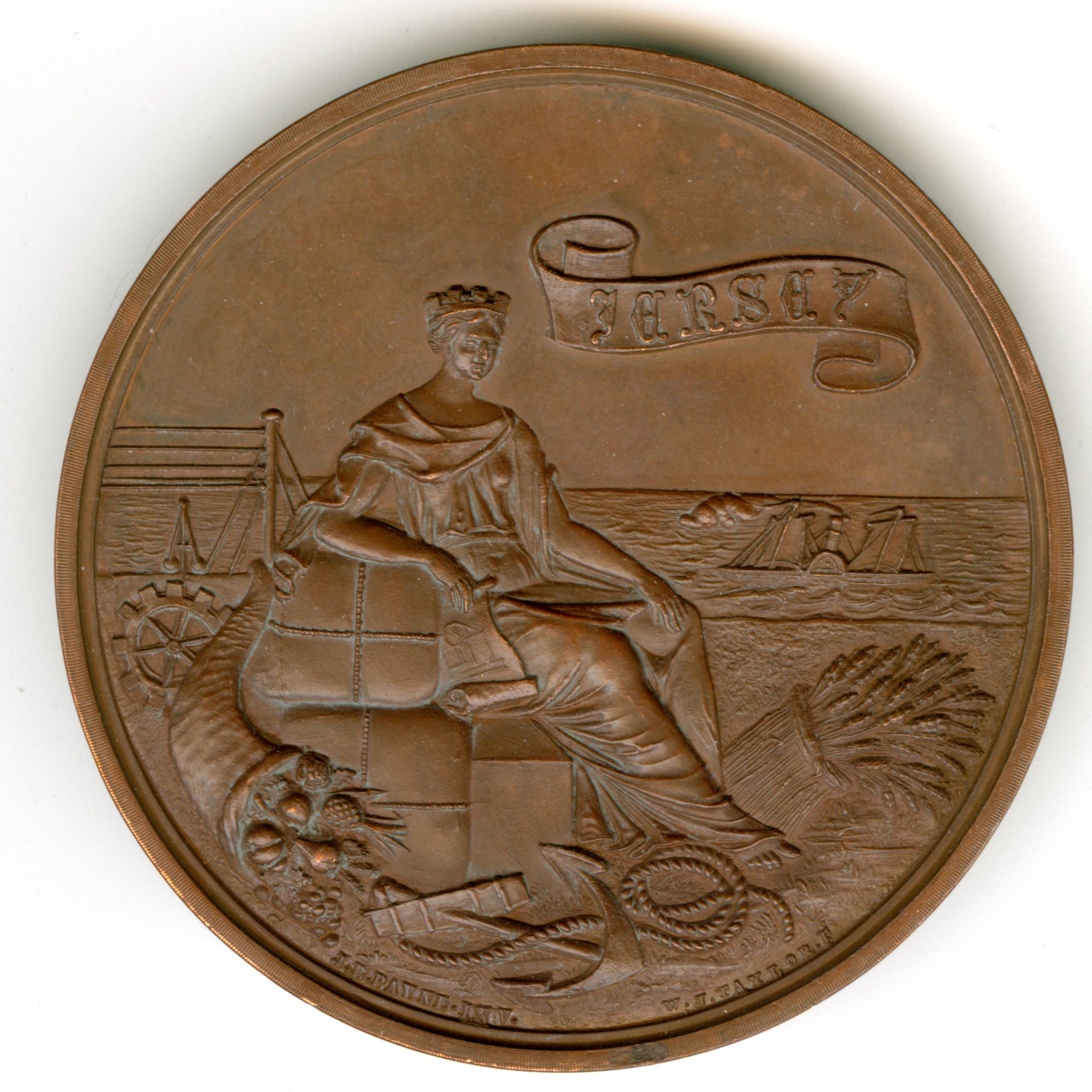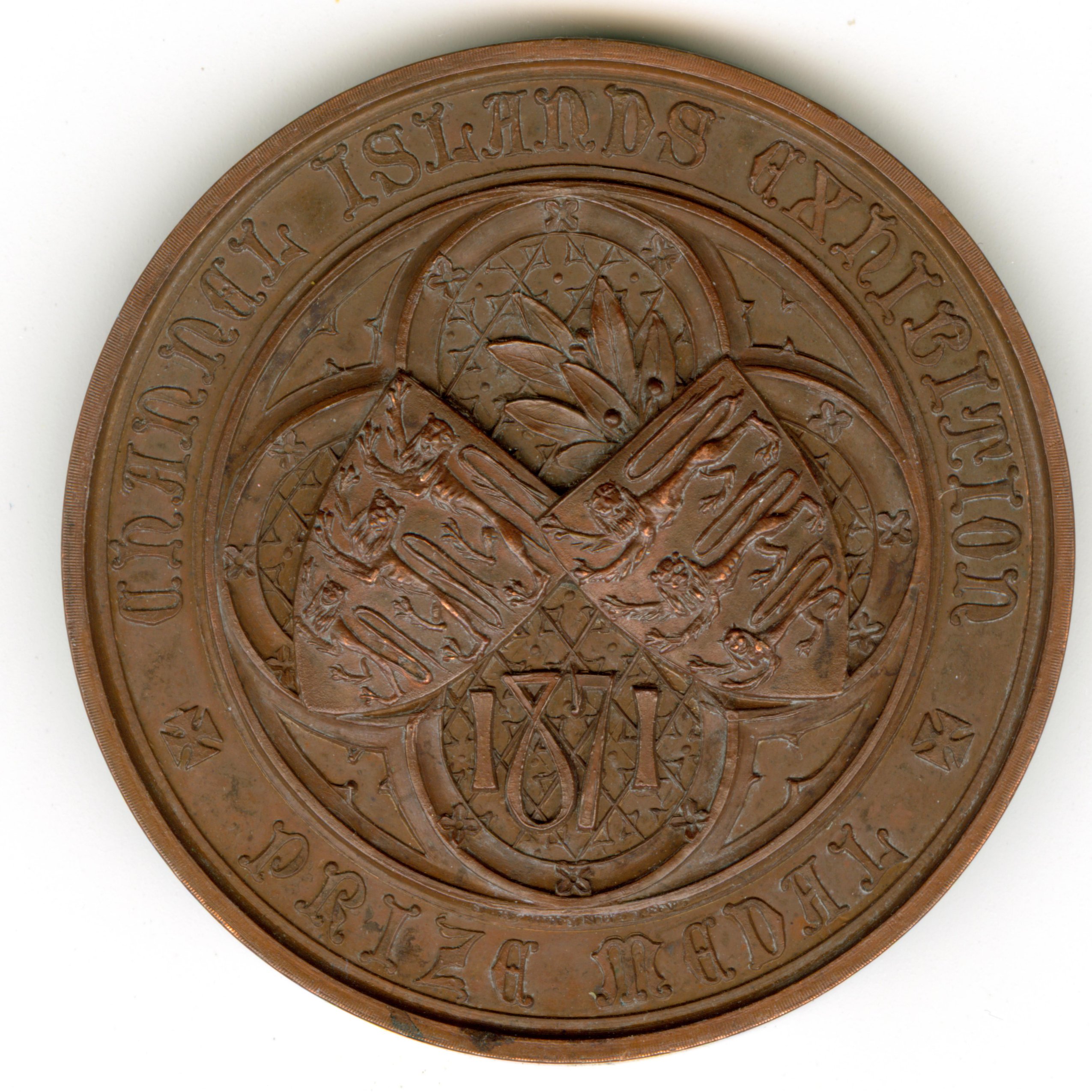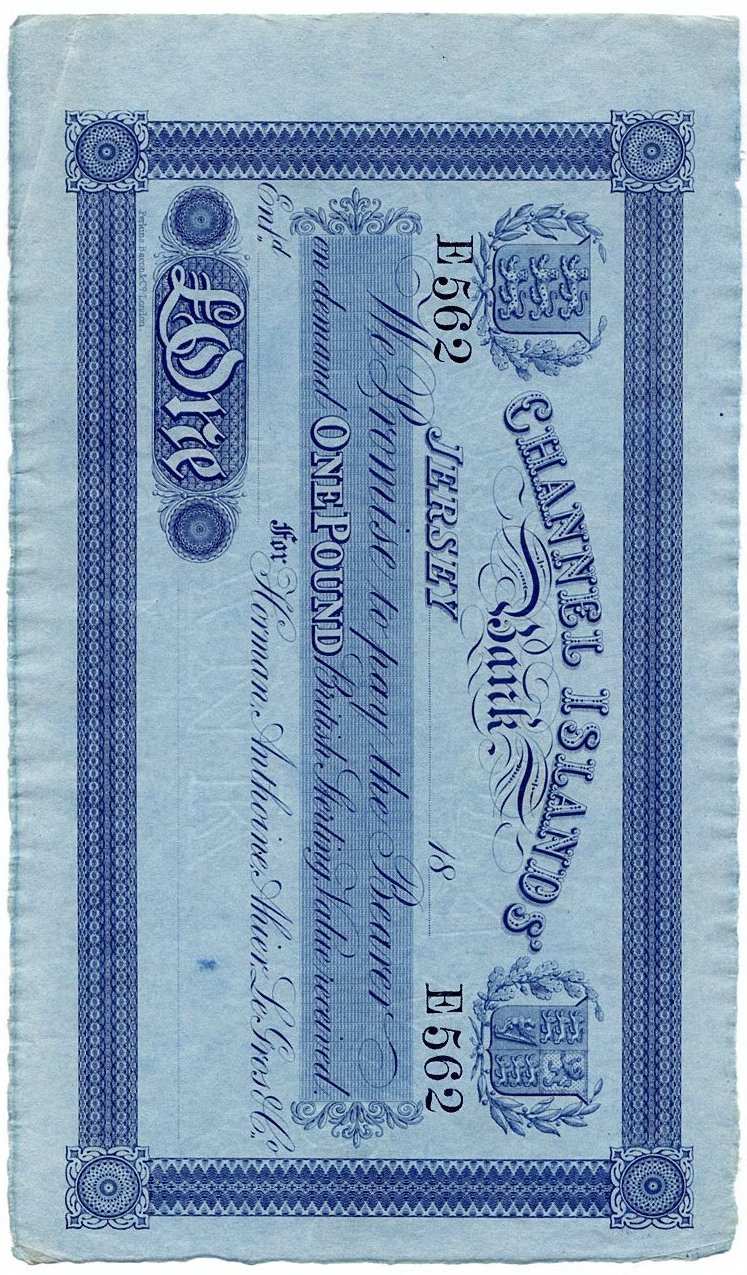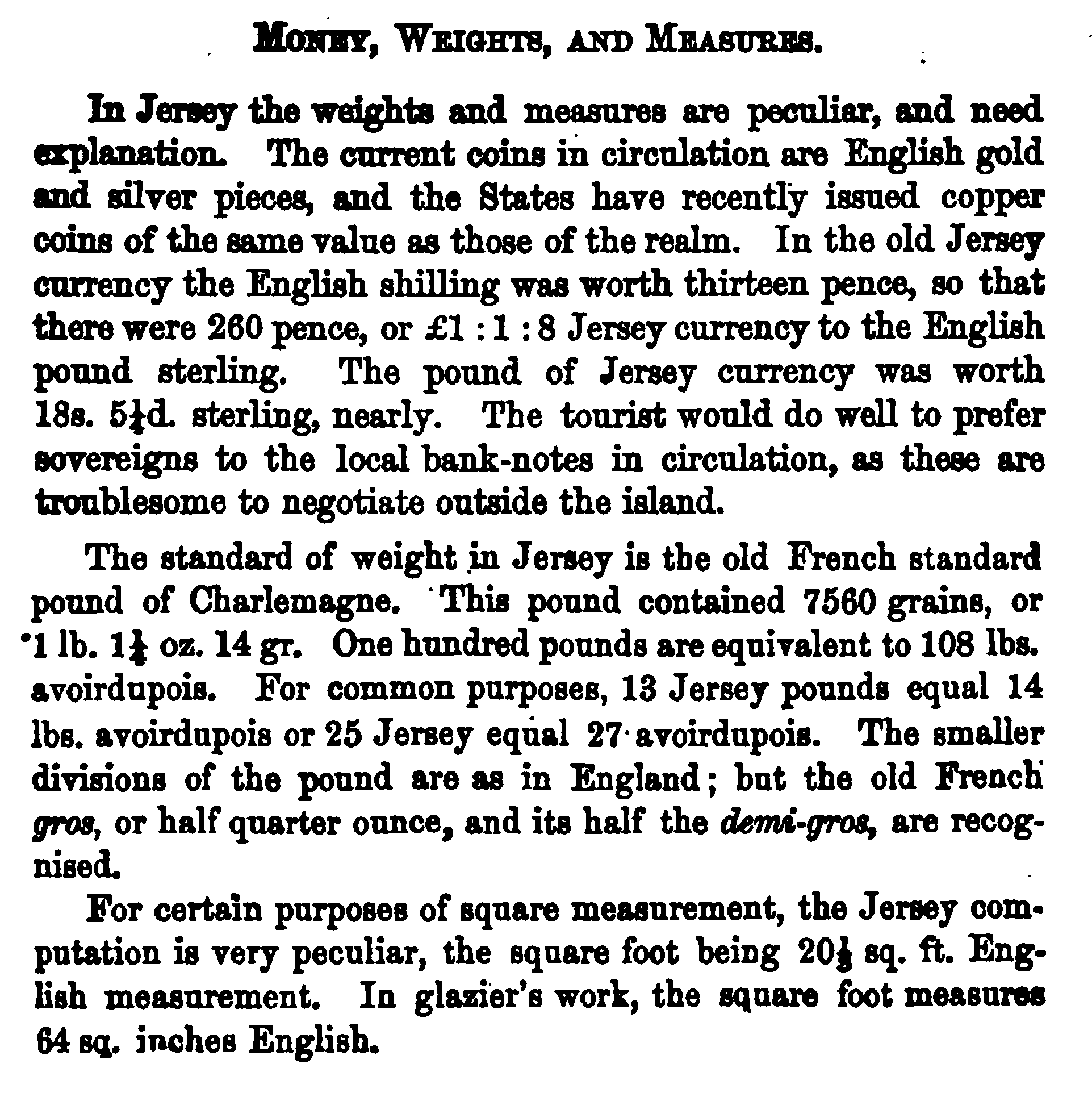Following the act of February 25, 1876,
Jersey coinage would be denominated as a 12th, 24th, and 48th of a shilling following the English standard. The new
coins of 1877 are the same size, although not the same weight as their English counterparts.
The obverse has a dexter coroneted bust of Queen Victoria, with a seven pointed star with the legend
“VICTORIA D. G. BRITANNIAR. REGINA F.D.”
The legend in English is “Victoria, by the Grace of God of the United Kingdom of Great Britain and Ireland Queen,
Defender of the Faith.”
Leonard Charles Wyon engraved
both the obverse and the reverse of the new coin.
The 1876 Coinage Committee requested the reverse to be “similar to, though not an exact copy of the
Channel Islands' Exhibition Medal 1871, which also contains other arms than those of the Island.
As regards [to] the obverse, the Committee is particularly desirous of retaining that of the Jersey coinage,
one penny and one half penny pieces of which are herein enclosed -- the only alteration needed being the
substitution of the year 1876 for 1866, or 1870.”1
J. B. Payne designed this 50 mm medal and his name appears at the bottom of the medal.
While working on the reverse, L. C. Wyon wrote to the Royal Mint on November 4, 1876,
concerned about the missing spots on the beasts.
Were the beasts lions or leopards?
The Bailiff assured the Royal Mint in a November 7, 1876 letter that the leopards on the previous coins
were a mistake and the animals were actually lions.2
However, the Bailiff was incorrect about the nature of these cats.
Some understanding of heraldry is necessary for any numismatist, especially regarding tinctures (colors).
Vertical lines are red (gules) and dots are gold (yellow).
Thus on the older coins, we have passant, guardant, yellow lions on a red shield.
Mr. Wyon, based upon the Bailiff's directions, updated the shield from “leopards” to “lions” by removing the dots.
He did keep the lines on the shield. The shield itself is a heater shape shield
and it divides the date. The wording “STATES OF JERSEY” is around the upper half of the reverse,
with the denomination around the lower half.
This design lasted until 1923, when a square shield, in addition with scrolls,
was restored.
Things to note about this series:
- The Coinage Committee changed the original order of £1,000 in pennies, £500 in half pennies,
and £500 in farthings to £1,000 in pennies, £700 in half pennies, and £300 in
farthings.1
- In 1877 the coins were not minted by the British Royal Mint
but by the private Heaton Mint (later known as the Birmingham Mint).
However, the Royal Mint did engrave the dies (in 18763) for the coins.
These coins are the only Jersey coins with a mint mark.
It is of interest that in 1877, the Heaton Mint minted coins for Hong Kong, Mauritius, and Jersey.
- The 1888 mintage was authorized on January 16, 1888
and confirmed by Order in Council on March 17, 1888.
The act authorized £2,000 nominal value worth of coins; half of which was delivered in 1888.
The remaining £1,000 was supplied in 1894.
- The new shield design, known as heater-shaped, is the earliest shape used for armorial purposes.
|
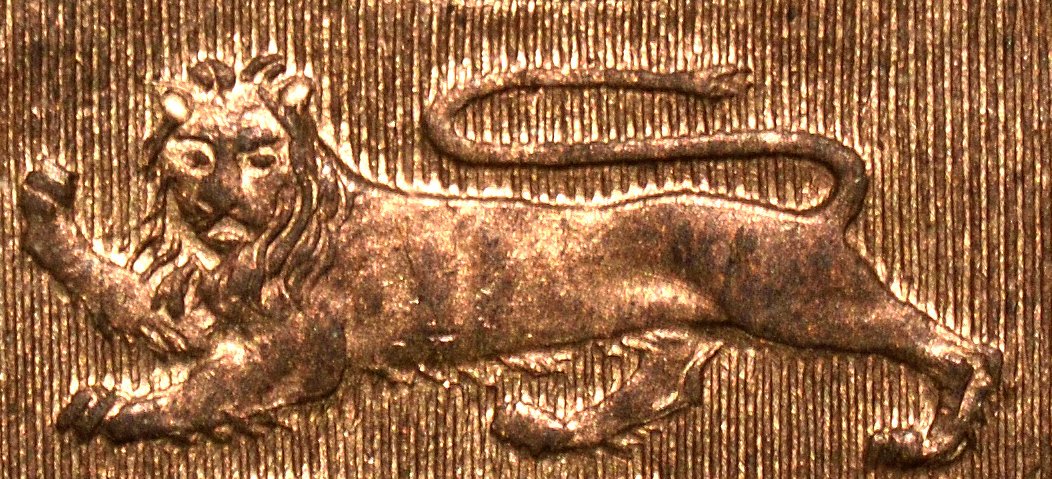

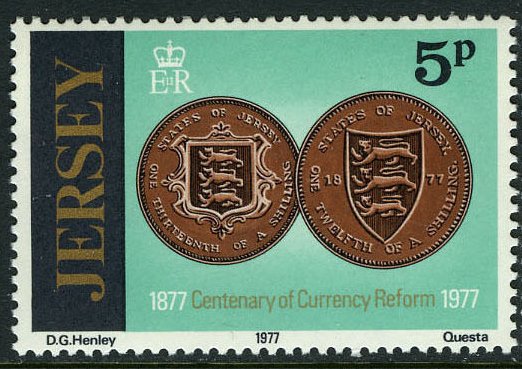


 to see images using a digital microscope.
to see images using a digital microscope.
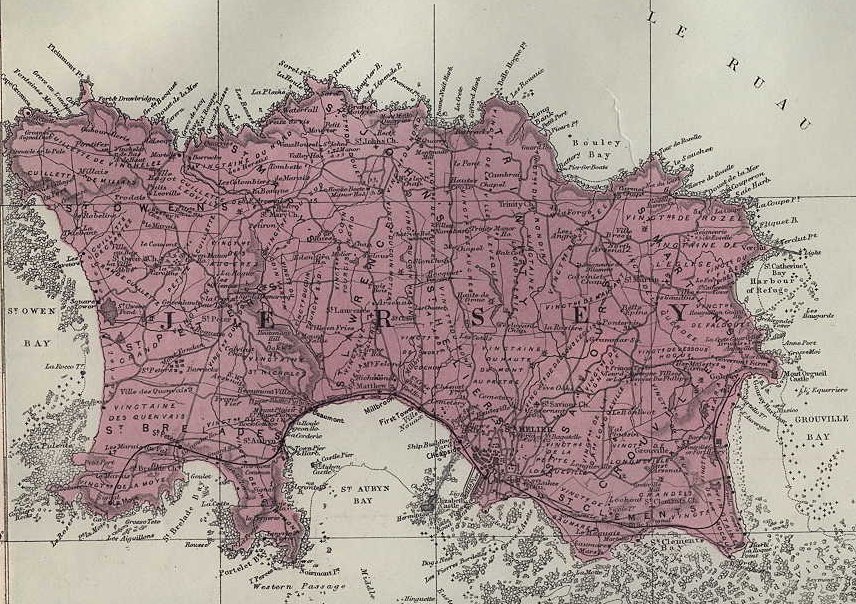
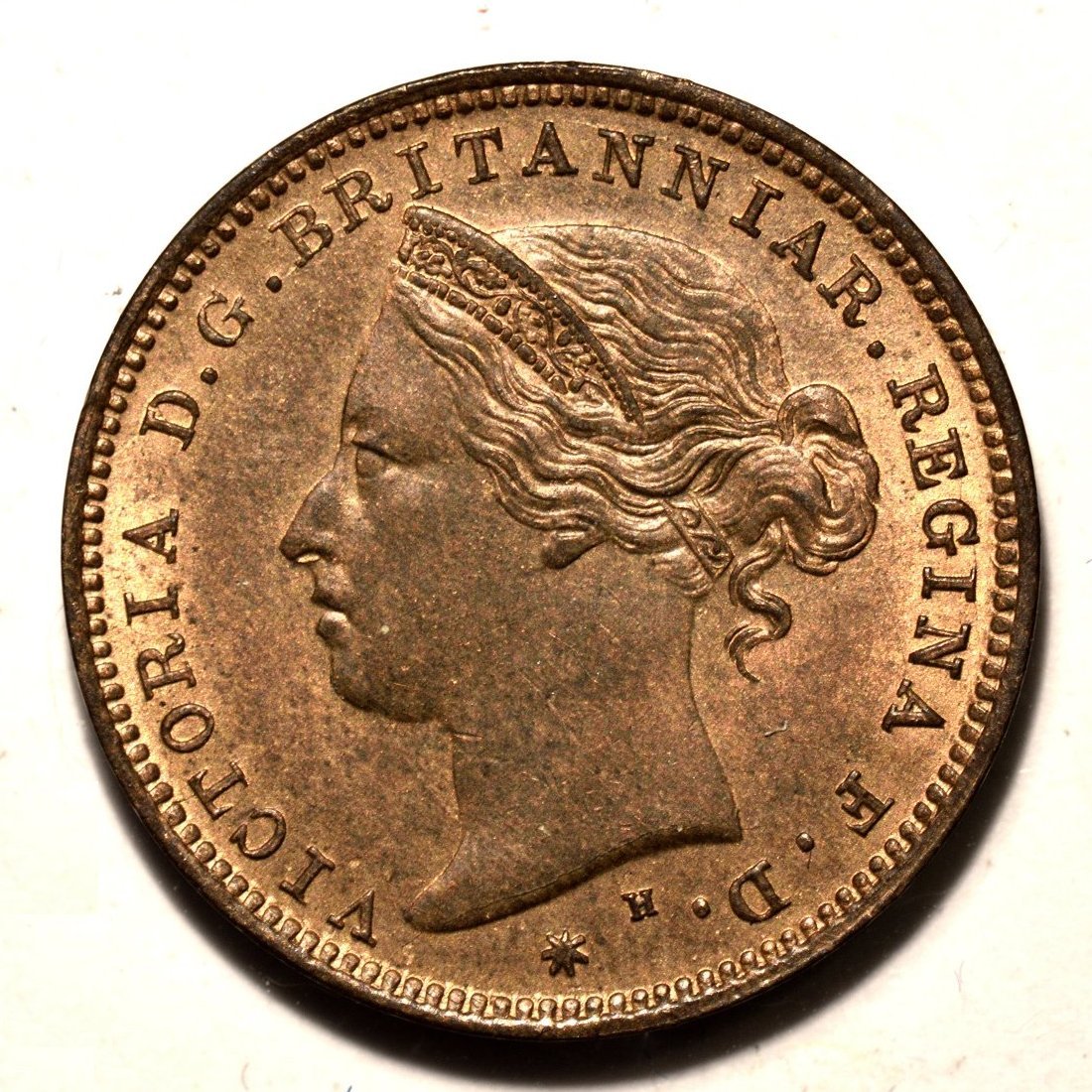
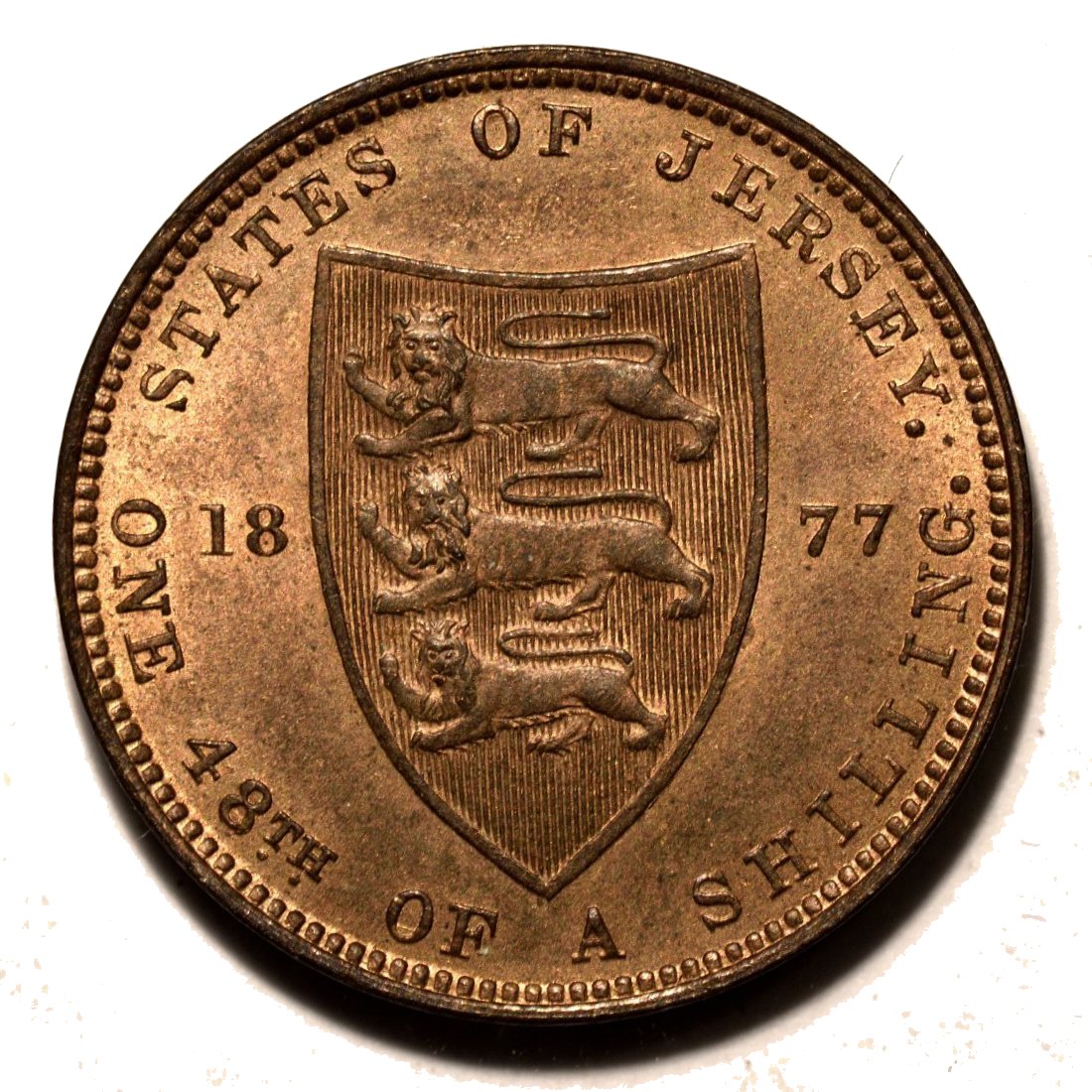

 1877H 59 288,000 20.3
1877H 59 288,000 20.3 



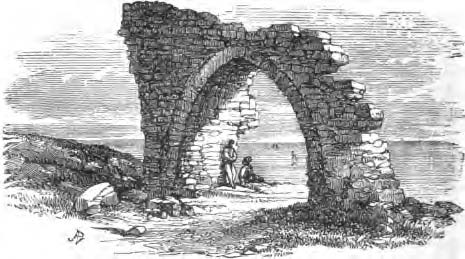
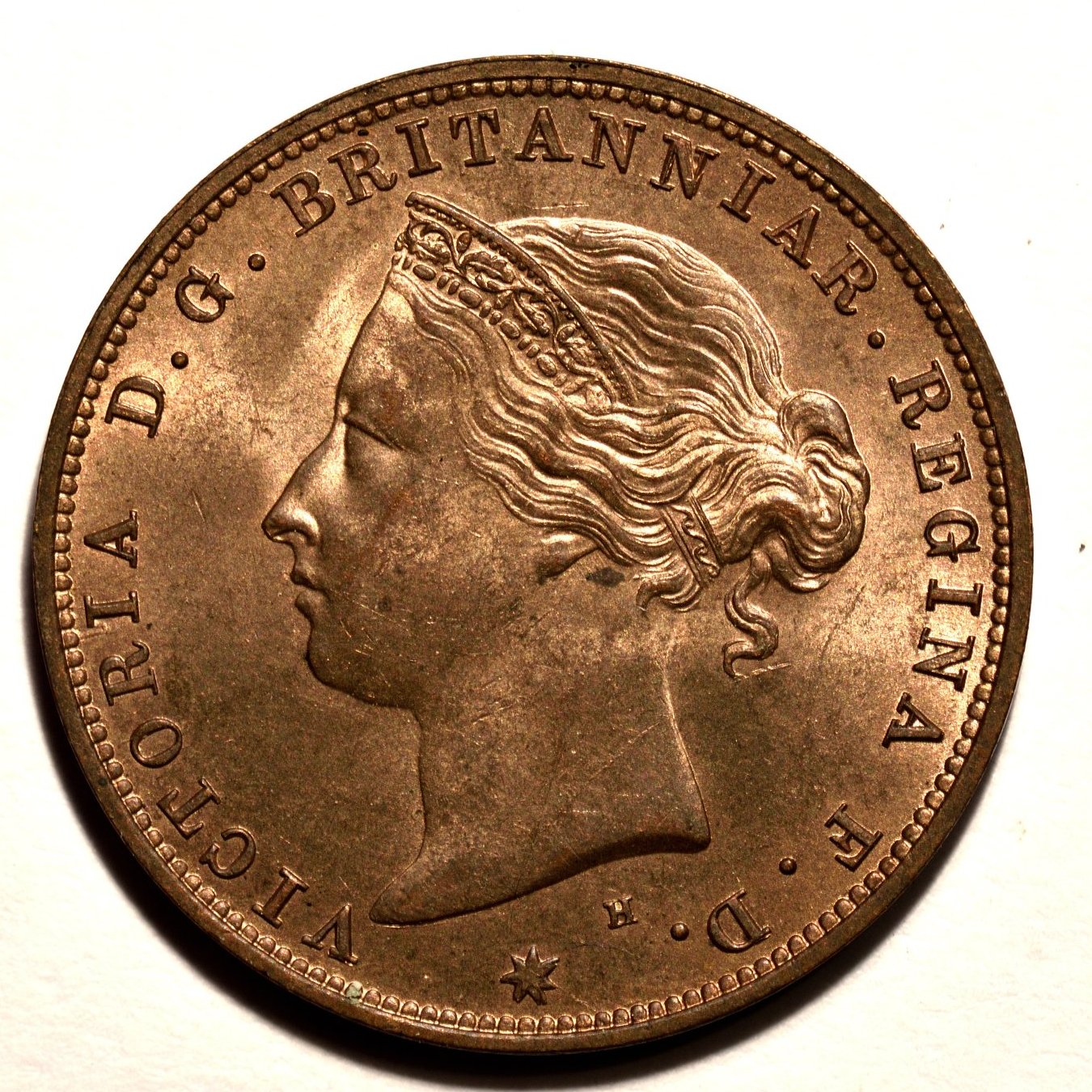
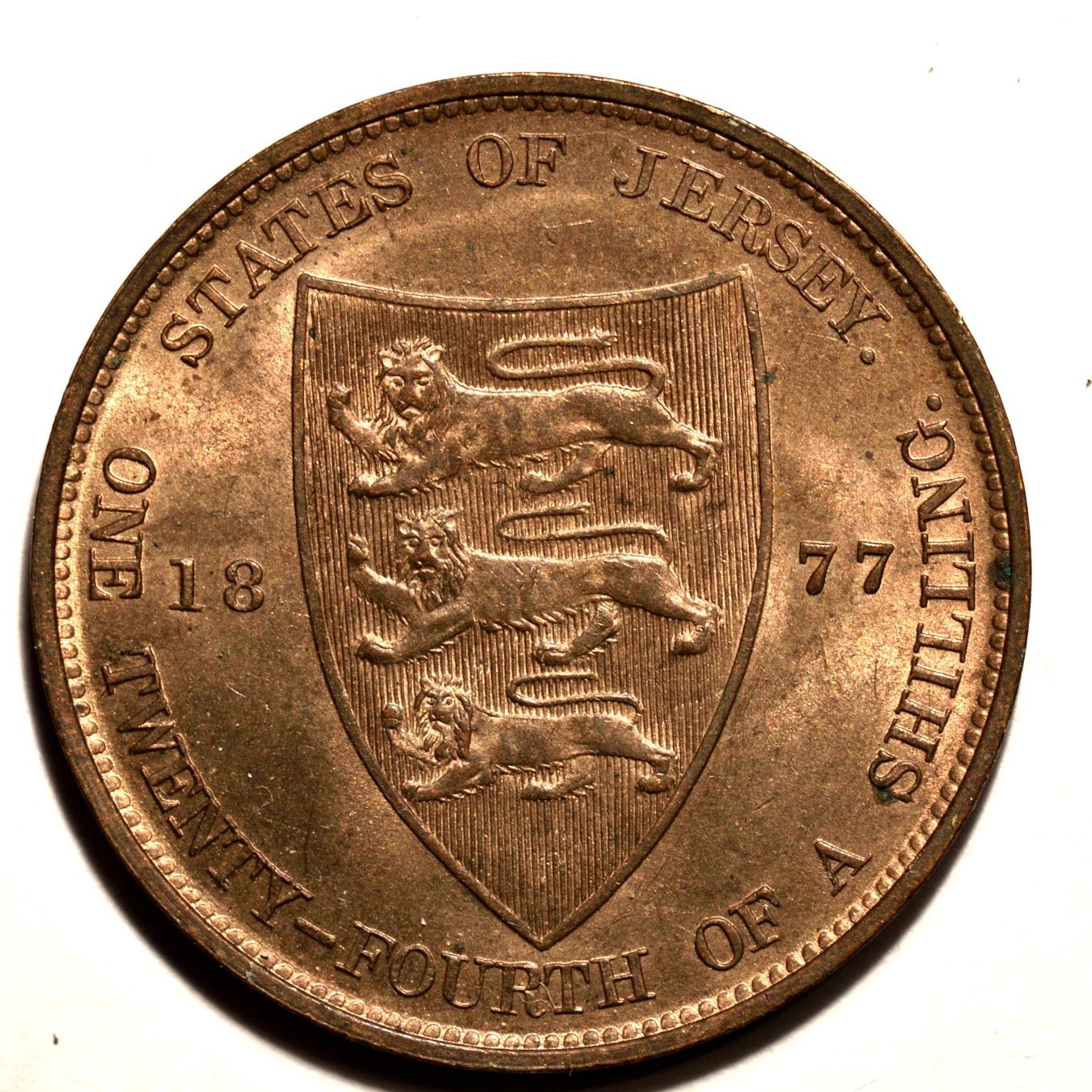


 1877H 42 336,000 25.57
1877H 42 336,000 25.57 



 1888 43 120,000 25.57
1888 43 120,000 25.57 



 1894 44 120,000 25.57
1894 44 120,000 25.57 



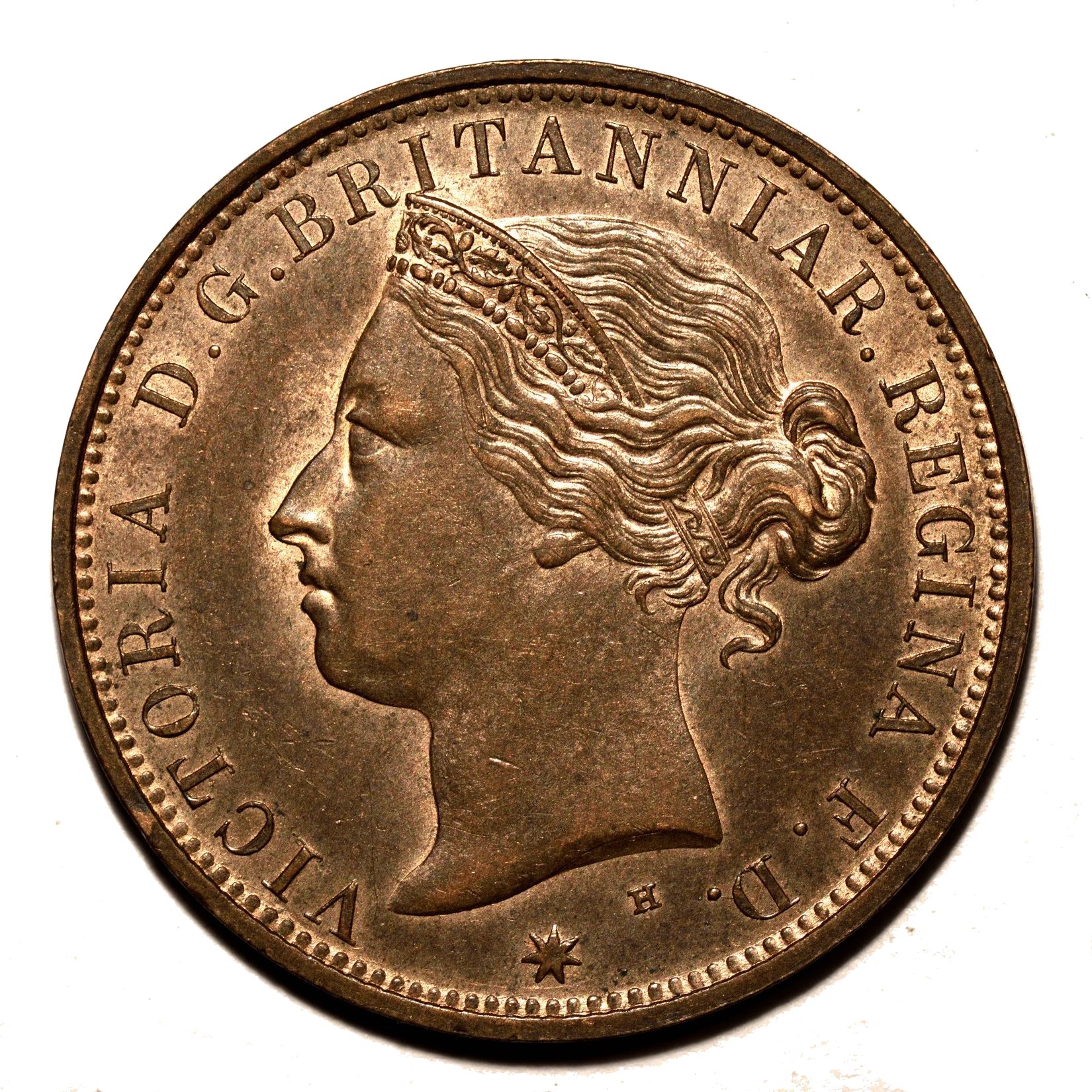
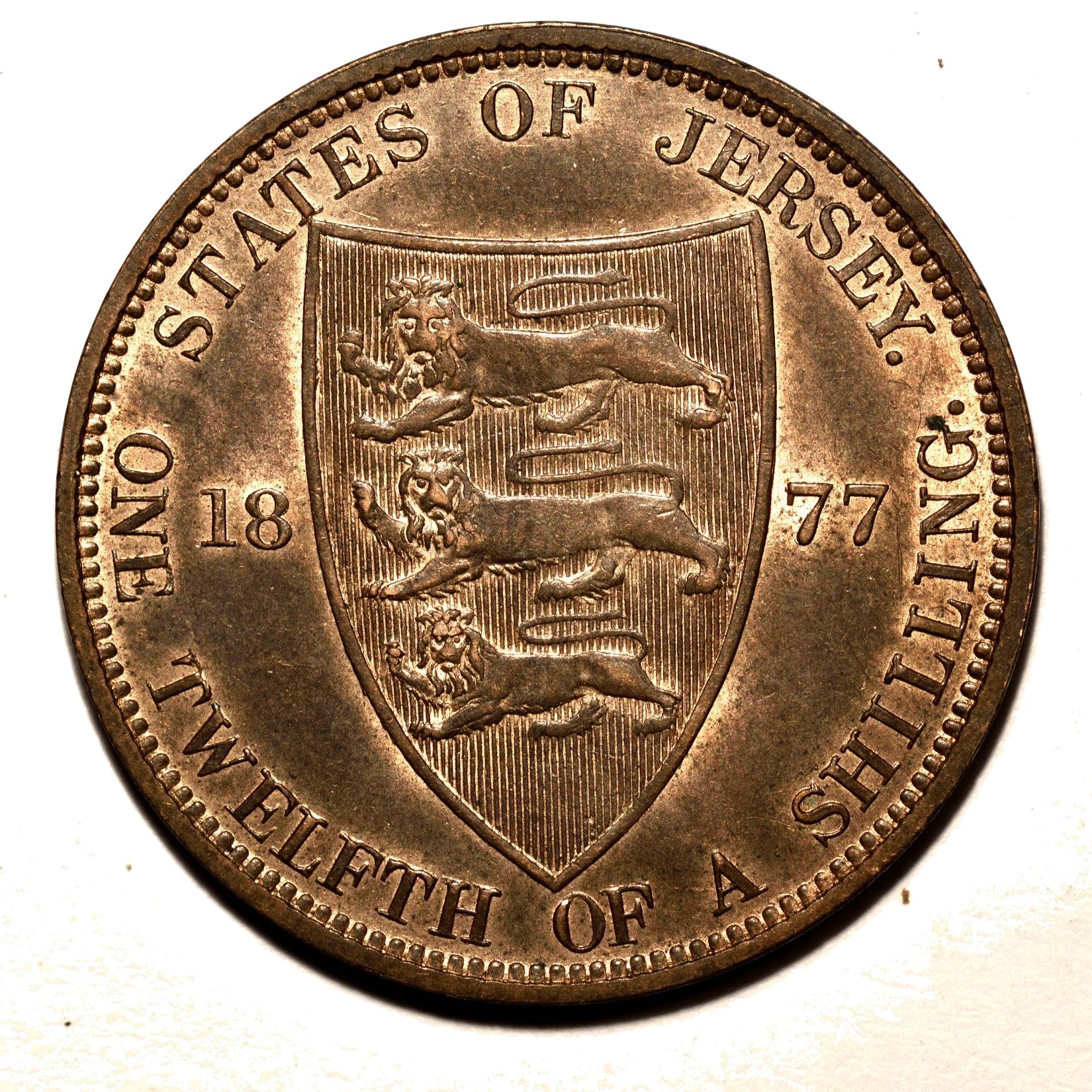
 1877H 12 240,000 30.70
1877H 12 240,000 30.70 



 1881 13 75,153 30.85
1881 13 75,153 30.85 



 1888 14 180,000 30.85
1888 14 180,000 30.85 



 1894 15 180,000 30.90
1894 15 180,000 30.90 



